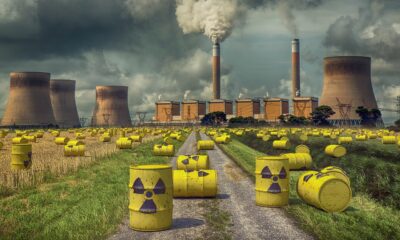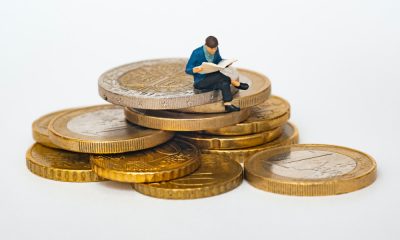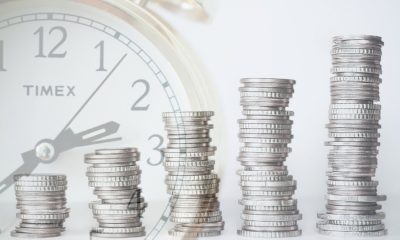Featured
Green Buildings in Germany Remain in Demand
Institutional investors spent 60 percent of their investment volume on green buildings in 2022, with insurance companies and pension funds among them investing the most “green” at around 70%. Although the volume of investment in “green buildings” declined slightly in 2022, a market report by BNP Paribas Real Estate shows clear trends in players, location and property use type.

Alongside the transport sector, the construction and building sector is one of the largest emitters of greenhouse gases and is therefore one of the areas where the greatest efforts are needed to achieve sustainability targets.
Most recently, however, the investment volume in so-called “green buildings” was slightly down at €11.2 billion, as a market report by BNP Paribas Real Estate shows.
Read more about green buildings and find out the latest business news of the day with the Born2Invest mobile app.
Institutional investors increasingly focusing on green buildings
A look at the market reveals clear trends in terms of players, location, and type of use of the property, as well as the type of certification.
Institutional investors spent 60 percent of their investment volume on green buildings in 2022, with insurance companies and pension funds among them investing the most “green” at around 70 percent, while asset managers put only 29 percent of their total investment volume into such certified properties.
Green office buildings in particular demand, logistics market dynamic
In 2022, the A-market remained the main venue for green buildings, with a share of 80 percent. The frontrunner was Berlin with an investment volume of EUR 3.2 billion. It was followed by Frankfurt with €1.7 billion and Munich with €1.6 billion. Green office buildings remain particularly in demand. They accounted for 65 percent of all green buildings and are now certified as green in almost every second office investment.
The biggest driver of this development remains internationally active companies. The logistics market is also proving particularly dynamic. 27 percent of all investments in this real estate class were green-licensed in 2022. A year earlier, the figure was 10 percent lower. As a result, their relative share of all green building investments also rose to 13.2 percent.
Hermann Horster explained the fact that properties certified according to BREEAM, DGNB or LEED criteria are in such high demand, even though they are not per se congruent with the ESG taxonomy, with the regulatory uncertainty that many investors are currently still facing. Horster is Head of Sustainability at BNP Paribas Real Estate and points out that regulatory ESG claims are still not clear enough. “The good old green building certificate is maturing into a hidden champion,” he said, launching it as a must-have.
Appropriate, because with the EU Energy Performance of Buildings Directive (EPBD) currently under revision and the extension of emissions trading to commercial buildings envisaged under the European Green Deal, it is certain that ESG compliance and sustainability will continue to be driving factors in the real estate market.
__
(Featured image by AnteKante via Pixabay)
DISCLAIMER: This article was written by a third party contributor and does not reflect the opinion of Born2Invest, its management, staff or its associates. Please review our disclaimer for more information.
This article may include forward-looking statements. These forward-looking statements generally are identified by the words “believe,” “project,” “estimate,” “become,” “plan,” “will,” and similar expressions. These forward-looking statements involve known and unknown risks as well as uncertainties, including those discussed in the following cautionary statements and elsewhere in this article and on this site. Although the Company may believe that its expectations are based on reasonable assumptions, the actual results that the Company may achieve may differ materially from any forward-looking statements, which reflect the opinions of the management of the Company only as of the date hereof. Additionally, please make sure to read these important disclosures.
First published in dpn, a third-party contributor translated and adapted the article from the original. In case of discrepancy, the original will prevail.
Although we made reasonable efforts to provide accurate translations, some parts may be incorrect. Born2Invest assumes no responsibility for errors, omissions or ambiguities in the translations provided on this website. Any person or entity relying on translated content does so at their own risk. Born2Invest is not responsible for losses caused by such reliance on the accuracy or reliability of translated information. If you wish to report an error or inaccuracy in the translation, we encourage you to contact us.

-

 Crypto1 week ago
Crypto1 week agoCaution Prevails as Bitcoin Nears All-Time High
-

 Africa3 days ago
Africa3 days agoBridging Africa’s Climate Finance Gap: A Roadmap for Green Transformation
-

 Biotech2 weeks ago
Biotech2 weeks agoEcnoglutide Shows Promise as Next-Generation Obesity Treatment
-

 Business14 hours ago
Business14 hours agoThe TopRanked.io Weekly Digest: What’s Hot in Affiliate Marketing [uMobix Affiliate Program Review]
























